
We all have a personal definition of aging, and most of us can pinpoint the exact moment we realized we may have lost a step or two. For me, that revelation hit in my late 30s.
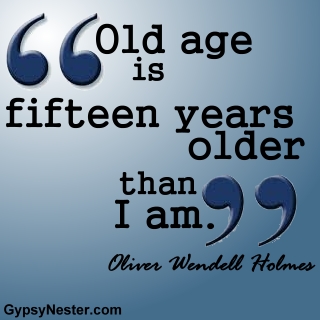
It was at my annual physical when my doc asked me to describe the quality of my sleep. I laughed and said “what’s sleep?” She didn’t laugh, but began really quizzing me about my sleep patterns. I told her that I assumed my slumber issues would resolve when my kids got older, to which she naturally inquired, “how old are the kids now?” I sheepishly replied truthfully, “8 and 9 years old” and she replied, “your sleep problems are not going to get better.” Ouch!
It was at that moment that I realized this was not going to get better without some effort on my part. I was at that annoying age where problems and issues stop healing on their own. I had to help my body along the correct path.
My options were simple. Take sleeping aids which could lead to more problems and dependencies, or accept that I had to take a more active role in the aging process. I joined a gym that week and began to exercise.
This was tough to manage. At the time our daughter was a nationally ranked gymnast and had to practice 20+hours a week, with travel to competitions. Our son was a competitive rock climber with a practice and travel schedule of his own. They both had homework and I was a tenured professor with a full teaching schedule to maintain.
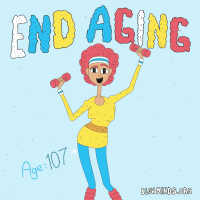
In the beginning I was only able to fit in a few hours a week. But I immediately started seeing and feeling the benefits! I was falling asleep easier at night, and more importantly, sleeping until the alarm sounded the next morning. I found it easier to work exercise into our tight schedules and realized that my overall mood increased as well. In fact, if I missed more than a few consecutive days in the gym, I was grumpy and in a foul mood. Exercise had improved my mental health as well as my physical state.
There are numerous studies that demonstrate a positive correlation between maintaining good health, and the quality of life through the aging process. And, the good news is that it is not too late to start earning these benefits.
Any physical activity will help reduce the overall levels of inflammation in the body. Inflammation is one of the biggest contributors to heart disease, decreased mental functions and even depression. Inflammation accumulates in the body as a normal by product of the aging process and the body is slower at removing those molecules the longer we live.
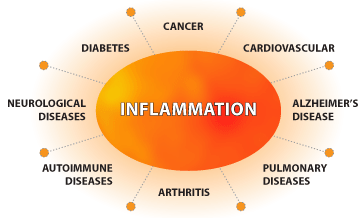
It makes sense! How many times have you heard that our metabolism slows down as we age? That means we are slower at removing toxins and internally generated molecules, our cells need our help.
What we eat and how much we move are the two most important factors to lowering our overall levels of inflammation. Coincidentally, regulating diet and exercise also correlates to higher cognitive levels as we age too!
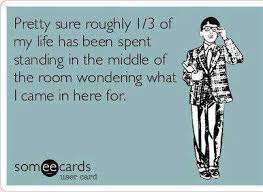
Limiting process foods and consuming less saturated fats are crucial to reducing overall inflammation. Foods that help lower inflammation (as well as cholesterol and assist in lowering blood pressure) include fruits and vegetables, whole grains, as well as consuming omega-3-fatty acids found in salmon and tuna. Just about any plant based protein will be beneficial as well, such as beans and nuts.
Once you have the proper fuel, it is time to consider exercise! Even moderate physical activity will earn huge returns on your health investment. The goal is to strike a balance between moving enough to lower inflammation but not to overtrain to the point of generating more inflammation. Confused yet? 
Moderate activity, which is any low impact activity, will help your heart and kidneys flush out inflammatory molecules. Yoga, walking, hiking, swimming and cycling are great activities that will not tax your muscles or joints.
That means you do not have to run a marathon, become a triathlete or perform at an Olympic level to stay young! The government guidelines are 150 minutes of moderate to vigorous activity per week. That may sound like a lot, but here are some tips:
- Break up the 150 minutes into 30 minute intervals. That is just 5 times a week where you could be walking your dog, going on a hike, riding a bike, swimming-all low impact for bad joints or just getting started.
- If you already have a fitness base, try out interval training. This is a great way to get in a lot of effort in a shorter time span.
- Try to avoid activities that cause inflammation, at least until you are stronger and fitter. Don’t start out doing HIIT circuit work, or jump into the latest fitness trend, until you have conditioned your body and are stronger.
- Your body will become accustomed to your new fitness level, called plateaus. Gradually build up your fitness level. It won’t take long for you to be able to easily walk or hike 5 miles. When it is, you start jogging!
Bedlam and Daisies, A wonderful blog from my friend Amy Lyon recently used this quote that I “borrowed”, which sums it up perfectly.
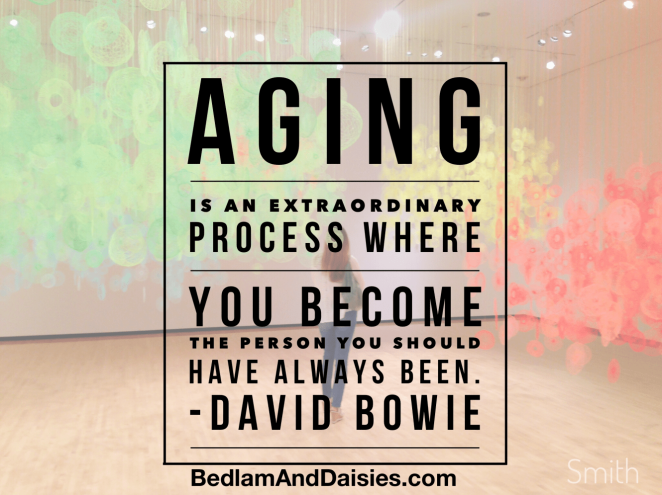
Invest in yourself today, you are worth the time 😊💕
References:
https://www.mensfitness.com/life/anti-aging-news-can-exercise-help-you-stay-young
https://www.medicalnewstoday.com/articles/315255.php
https://www.webmd.com/women/ss/slideshow-what-is-inflammation
If you want more of a scientific explanation, this is a great academic article,
https://academic.oup.com/biomedgerontology/article/72/9/1218/2731236

funny. before i got to the part where you asked your doctor ‘what sleep?’ that question came to mind.
my kids, however are younger, four and six and eleven. and they keep me on my toes, so i’m as hyperactive as they are. lol.
LikeLiked by 1 person
haha 😂 🤣 I remember those ages well, at least I only had two to keep my awake 💕
LikeLiked by 1 person
well, my oldest is 11, and supposedly he’s the wisest, but he’s the one who gives me the headaches. the younger two are easier to deal with, but i bet they’ll be worse. teens these days are so much different from the time i was one.
LikeLiked by 1 person
oh ya! Hang in there mom😊💕
LikeLiked by 1 person
This is exactly what I needed to hear. Thank you for sharing your fitness and anti-ageing knowledge and techniques! Here is My Letter A Response
LikeLiked by 1 person
Thanks for taking the time to check it out! I will be over to yours soon! 💕
LikeLike
Thanks for this I found it very helpful 😊
LikeLiked by 1 person
I am so glad!
LikeLiked by 1 person
Very nice post! 😀 However the part about sleeping destroyed my hopes 😀
LikeLiked by 1 person
Hang in there! We all have our own hormones to deal with 😊
LikeLiked by 1 person
Ah, so true! 💞🌼
LikeLiked by 1 person
Thanks for the information
LikeLiked by 1 person
I definitely notice how better I feel when I eat better and get exercise in.
~Patricia Lynne aka Patricia Josephine~
My A to Z’s of Dining with IC
Patricia Lynne, Indie Author
LikeLiked by 1 person
Thanks for stopping by Patricia! Do you have a blog as well? Doing the challenge too?💕
LikeLike
Some good advice. Staying active helps with a lot of issues. Mental and physical. And since one and the other are often connected, it’s a win – win situation to just keep pushing.
LikeLiked by 1 person
Well said my friend 😊
LikeLiked by 1 person
Great post and very good advise. Being active helps us in many areas in our life. 🌞
LikeLiked by 1 person
Yes!😊
LikeLike
You already know I am convinced. Thanks to work I have not been to the gym in a week and it is driving me crazy!😄
LikeLiked by 1 person
It is so hard to explain that feeling to people who do not value exercise! But the pain is real!! Hope you get there soon 😊
LikeLike
Exercise is DEFINITELY the key to so many things, though sometimes it itself reminds me of the passage of time. But there are so many ways to connect to our bodies, and if one doesn’t work, there’s always another!
Happy A to Z!
@IsaLeeWolf
A Bit to Read
LikeLiked by 1 person
Very well put! Thanks for stopping by 😊
LikeLiked by 1 person
I am such a slug. You are very motivational with this post! As my Mom would say “Gotta get a move on.”
LikeLiked by 1 person
Just walk Walter-that has to be a work out! 😊
LikeLiked by 1 person
His obedience class does me in. After one hour my knees are screaming, my left wrist is aching and my left shoulder, too. My ‘heeling’ side needs some healing!
LikeLiked by 1 person
Oh no Linda 😔What will happen when you have two of them?😬
LikeLiked by 1 person
Bill is going to take one and I’ll take the other. He hasn’t decided yet which one might be the better choice. Walter is an absolute beast, though he’s been trained. The new girl is only 110 lbs but with no training that we know of. Either way, I think there will be a look of fear…er…trepidation on his face! 😉
LikeLiked by 1 person
I wish you the best of luck😊💕 both of you!
LikeLiked by 1 person
You are incredibly intelligent. 2. How do you accomplish all that you do? 3. Thank you for sharing this.
LikeLiked by 1 person
Are you sure you are looking at my blog, Jay 😜
LikeLiked by 1 person
Um…. if I only looked at this one post, it would be evident and clear. 🙂 Beyond that, it just gets better.
LikeLiked by 1 person
I don’t deserve you 😃💕!
LikeLiked by 1 person
Awew
LikeLike
Excellent post!!!!
LikeLiked by 1 person
Thanks Sophie💕
LikeLiked by 1 person
Your welcome sweet friend 🙂
LikeLike
Awesome message!!!💚
LikeLiked by 2 people
Thanks Roda!
LikeLiked by 1 person
Finding yoga and pilates was a life changer for me from a mental standpoint (and physical, obviously). My biceps are killing me from hanging on for dear life on the tube ride that my teens coerced me into taking. I just commented to the hubby on the drive home that I keep thinking if I ignore the aches and pains of my aging then that might mean they don’t exist. lol.
I’m glad that you liked the quote and “borrowed” it. 😉
LikeLiked by 1 person
haha! be careful, I am really bad about ignoring pain and now I have been dealing with a slow healing foot problem! You are still young though😊
LikeLike
Excellent post! Exercise really helps so many areas in life. Pilates has changed mine 🌞
LikeLiked by 1 person
If I didn’t exercise, my mind would be the first to go😜
LikeLike